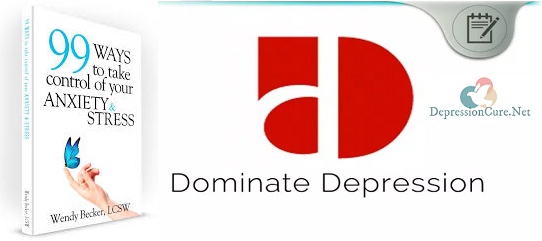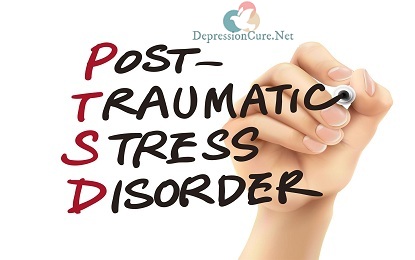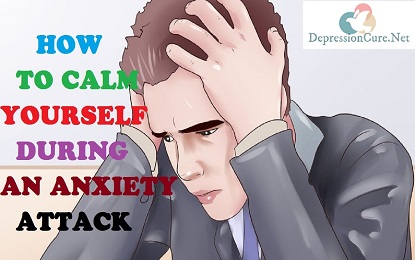Introduction
What is Post traumatic stress disorder (PTSD)?
Post traumatic stress disorder (PTSD), such as acute stress disorder, is characterized by the presence of symptoms immediately after a traumatic event. Therefore, in patients with post traumatic stress disorder, there are always new signs or changes in symptoms that reflect specific trauma.?
Although patients with post traumatic stress disorder have assigned a different level of importance to this phenomenon, all of their symptoms have trauma-related symptoms.
A psychological event is leading to the development of post traumatic stress disorder , usually, with the presence of their death (or trauma) or the death or injury of others experiencing a traumatic event, those who suffer from PTSD – When developing traumatic stress disorder, they should experience intense fear or horror.
Such experiences can occur with a witness and a victim of an accident, a crime, an attack, a theft of children, a natural disaster. Also, post traumatic stress disorder can develop in a person who has learned that he is suffering from a fatal disease or is experiencing systemic physical or sexual abuse.
There is a direct relationship between the severity of psychological trauma, which in turn depends on the degree of danger to life or health, and the likelihood of developing post traumatic stress disorder.?
Click Here To Read: What Ended The Great Depression
What causes post traumatic stress disorder?
It is believed that post traumatic stress disorder sometimes occurs after an acute response to stress. However, post traumatic stress disorder can also develop in individuals who, after an ES, have not detected any mental disorder (in these cases, post traumatic stress disorder is thought to be a delayed response to an event goes).
Somewhat less often, post traumatic stress disorder occurs in people who have previously experienced an ES. Individuals who have transferred an acute response to stress due to repeated minor trauma develop post traumatic stress disorder after the transitional period.
In this case, after the disaster, victims often formulate the idea of ??inferiority of human life.?
Scientific research of post traumatic stress disorder is a relatively new trend and, most likely, will increase its importance in forensic psychiatry. Cases of fraud have already been referred to as psychological harm for post traumatic stress disorder.
Injury in childhood, physical abuse and, in particular, sexual abuse of children, transforms the victim into a criminal and an oppressor into adulthood. The model of a borderline personality disorder confirms its direct causal relationship with long-term and recurrent trauma from those who took the child’s primary care in childhood.
Such prolonged and recurring trauma can affect normal personal development. In adult life, an acquired personality disorder may be associated with repetitive personalities of malicious or violent behavior, which “lose” elements of trauma experienced in childhood.?
Some characteristics of post traumatic stress disorder have been associated with the commission of the crime. Thus, crime is related to the pursuit of thrill (“addiction to trauma”), seeking punishment to reduce feelings of guilt and developing co-morbid abuse of psychoactive substances.
During flashbacks (intrusive, repetitive experiences), a person may violently react to environmental stimuli reminding them of the original stimulus event. The incident was seen among the Vietnam War participants and policemen, who may respond with violence with some incentive that reflects the “on the battlefield” situation.

How does post traumatic stress disorder develop?
Because post traumatic stress disorder, a behavioral disorder arising from the direct effects of trauma, a person must understand the pathogenesis, according to several studies of traumatic stress in experimental animals and humans.?
Click Here To Read: 75 Depression Quotes
Hypothalamic-pituitary-adrenal axis
One of the most frequently identified changes in posttraumatic stress disorder is a disturbance in the regulation of cortisol secretion. The role of the hypothalamic-pituitary-adrenalal axis (GGNO) in acute stress has been studied for many years.
A lot of information has been collected on the effects of acute and chronic stress on the functioning of this system. For example, it has been shown that corticotropin-releasing factor (CRF), adrenocorticotropic hormone (ACTH) over time and cortisol levels there is a decrease in cortisol release, although higher levels of CRF occur, although it is detected.
In contrast to the great frustration, disturbance characteristic of the regulatory function of HHNO, post traumatic stress disorder shows an increase in response in this system.
Thus, lymphocytes in patients with post traumatic stress disorder have a higher sensitivity to corticosteroid receptors at lower levels of cortisol at their standard daily fluctuations and, in patients with depression, and the mental health of individuals.
Also, neurocrine tests show increased secretion of ACTH in PTSD when administered CRF and increased cortisol response to the dexamethasone suppression test. It is believed that dysregulation GGNO explains these changes at the level of the hypothalamus or hippocampus.
For example, Sapolsky (1997) argues that traumatic stress through effects on cortisol secretion ultimately causes a distortion of the hippocampus, and the use of morphometry MRI suggests that a decrease in the amount of hippocampus in PTSD.
Autonomic nervous system
Since the hyperactivation of the autonomic nervous system is one of the significant manifestations of posttraumatic stress disorder, the noradrenergic system has been studied in this condition.
With the onset of yohimbine (alpha 2-adrenergic blocker) in patients with post traumatic stress disorder, immersion in traumatic experiences (“flashbacks”) and panic-like reactions occurred.
Positron emission tomography indicates that these effects may be associated with increased sensitivity of the noradrenergic system. These changes can be related to the defect data of GNOH, which takes into account the interaction of GnRH and the noradrenergic system.

Serotonin
The most apparent evidence of serotonin’s role in post traumatic stress disorder derives from pharmacological studies in humans. Data are also obtained on models of stress in animals, which also suggests the involvement of this neurotransmitter in the development of post traumatic stress disorder.
It is shown that artificial roads and anthropogenic apes can have significant effects on the serotonergic system due to environmental factors. Also, preliminary data suggest that there is a relationship between the external conditions of children’s upbringing and the activity of their serotonergic system.
At the same time, the state of the serotonergic system with post traumatic stress disorder is poorly understood. Neuroendocrinology testing, neuroimaging, the use of molecular genetic methods requires more research.
Click Here to Read: 60 Interesting Depression Facts
Condition reflex theory
It is shown that post traumatic stress disorder can be explained based on a conditioned reflex alarm model. With post traumatic stress disorder, a deep trauma can serve as an unconditioned stimulus and theoretically affect the functional state of the amygdala and the associated neuronal mandible leading to feelings of fear.
Activation of this system may explain the presence of “flashbacks” and a general increase in anxiety. External manifestations related to trauma (e.g., the sound of war) may serve as conditional stimuli. Therefore, the amygdala can be activated by similar sounds by a mechanism of conditioned rebound, which will increase “flashback” and increased anxiety.
Through the relationship of the amygdala and the temporal lobe, the activation of the fear that produces the neuron circle can “revive” the memory traces of an appropriate psychological event, even in the absence of proper external stimuli.?
Among the best studies have been studies that studied the intensification of timid reflex under the influence of fear. As a conditional stimulus, a flash of light or sound was made, they were turned on after being given unconditional encouragement ? an electric shock.
An increase in the amplitude of the sharp reflex upon presentation of the conditioned stimulus made it possible to assess the degree of fear effect on the rebound. This response involves the induction of a neural cycle that is causing fear and is described by Ledoux (1996).
Although there are some discrepancies in the data obtained, they indicate a possible link between post traumatic stress disorder and powerful fear of onset-reflex.
Neuroimaging techniques also show involvement in PTSD entities related to anxiety and fear, particularly the generation of the amygdala, hippocampus, and other structures of the temporal lobe.?
Symptoms of post traumatic stress disorder
Post traumatic stress disorder is characterized by three groups of symptoms: a continuous experience of a traumatic event; A desire to avoid incentives reminiscent of psychological trauma.
An increase in autonomic activation, including a rapid response to fear (a fearful reflex), is a classic of post traumatic stress disorder ?- a sudden painful dive in the past, when the patient is repeatedly shown an event that has just happened (so-called “flashback”).
Many experiences can also be expressed in unpleasant memories, massive dreams, enhancing physical and mental responses to stimuli, one way or another associated with traumatic events.
To be diagnosed with post traumatic stress disorder, the patient must recognize at least one of these symptoms, indicating a persistent experience of a traumatic event.
Other symptoms of post traumatic stress disorder include blunting, a feeling of isolation or derealization, a feeling of hopelessness, an attempt to avoid thoughts and actions associated with memory for trauma, anhedonia, events related to reduced trauma.?
PTSD is characterized by a profound survival instinct, for which a constant operating mechanism is usually compared with (filtering) stimuli to maintain the continuously increasing and increased internal emotional stress (stimulation) to maintain external stimuli. Features are organized in mind.?
Click Here To Read: Psychology Test
In these cases, there are increasing internal emotional stresses (extreme alertness), concentration, increased stability (noise immunity), and attention to what the person regards as threatening situations.
There is a decrease in the amount of attention (the ability to hold a large number of thoughts in a cycle of arbitrary purposeful activity and the difficulty of conducting them independently).
There is an excessive increase in attention to external stimuli (external field structure), which may lead to decreased concentration with the difficulty of bringing attention to the subject’s internal field structure.?
One of the critical symptoms of post traumatic stress disorder is a disorder that is partly considered as a failure in memory (difficulties remembering. Holding in one or the other information and recall of reproduction).
These disorders are not related to actual violations of various memory functions but are mainly due to the difficulty of focusing on facts that are not directly related to the unexpected event and the risk of its remarriage.
Also, the victims have not missed important aspects of this traumatic event, which is caused by the breach that occurred during the acute response to stress.?
Constant increases in internal psychological stress (arousal) support a person’s desire not only to react to a real emergency but also to symptoms that are more or less similar to a traumatic event.
Clinically, it manifests itself in an overreaction of fear. Events, emergency symbols or this recall (visiting the tomb of the deceased on the 9th and 40th day after death, and others.), is not a subjective fall and severe vaso vegetative response.
Simultaneously with the above disorders, the memories of the most extraordinary events related to ES are involuntary (without a sense of being done). In most cases, they are unpleasant.
Still, some people themselves (evoke memories of ESE), which is their opinion, help to avoid this situation: the events associated with it become less terrible (more common).?
Occasionally some people with PTSD may experience flashbacks, a disorder that manifests itself as involuntary, very vivid thoughts about the psnhotravmiruyuschey condition.
Sometimes it is difficult to separate from reality (these states are close to the syndrome of the ambiguity of consciousness), and a person may manifest aggression at the time of encountering flashbacks.
During post traumatic stress disorder, sleep disorders are almost always detected. The difficulty of falling asleep is associated with the flow of unpleasant memories of emergencies, as victims note.
There are often nights and early wake-ups with a feeling of undue anxiety, “maybe something has happened.” Some dreams directly reflect a traumatic event (sometimes the dreams are so bright and unpleasant that the victim does not sleep at night and “calm down” in the morning to calm down).
Click Here To Read: How To Quit Smoking
The persistent internal tension in which the victim is located (due to the instinct of self-defense instinct) makes it difficult to control the affected: sometimes, victims cannot control an outburst of anger even for a small reason.
However, an outbreak of violence may be associated with other disorders: difficulty (inability) to adequately understand the emotional mood and emotional gestures of others. Victims are also seen to have alexithymia (a failure to translate into verbal planning experiences of feelings of self and others).
At the same time, there is difficulty in understanding and expressing emotional subjection (polite, soft disapproval, warning sympathy, etc.).
Individuals with PTSD may experience emotional apathy, lethargy, apathy, lack of interest in the surrounding reality, desire pleasure (anhedonia), desire for recognition of the unknown, as well as a decline of interest in previously important activity.
Victims are, as a rule, reluctant to talk about the future and often see it as pessimistic, without looking at the possibilities. They are troubled by large companies (except for only those individuals who have suffered the same stress as the patient), preferring to be alone.
But after some time, they begin to oppress the loneliness, and they begin to express their dissatisfaction with their loved ones, ridiculing them for carelessness and carelessness. At the same time, other people’s feelings of isolation and distance arise.
Special mention should be made of the increased suggestions of victims. They are easily persuaded to try their luck in gambling.
In some cases, the game is so occupied that victims often lose everything up to the allowances allocated by the authorities to buy new housing.
As already mentioned, with post traumatic stress disorder, a person is caused continuously by internal stress, which, in turn, reduces the exhaustion threshold. Along with other disorders (low mood, weak concentration, subjective memory impairment), this leads to a decrease in inefficiency.
Especially when solving specific tasks, sufferers find it difficult to identify the main one. When an appointment is received, they cannot understand its original meaning, try to make responsible decisions, etc. to others.
It should be emphasized that in most cases the victims (“feel”) are aware of their professional decline and for whatever reason forbidden the proposed work, (no interest, level and still social status, Does not correspond to underpaid) prefer only to receive unemployment benefits, which is much lower than the salary offered.
The instinct of self-preservation changes in everyday behavior. The basis of these changes is the behavioral task, on the one hand, for early detection of emergencies, on the other, to take precautions to redeploy a contingency situation. Precautions are taken by the person determining the nature of the transferred stress.
The survivors of the earthquake sit close to the door or window, so if necessary, leave the room quickly. They often look at the chandelier or aquarium to determine if an earthquake does not start.
Simultaneously, they choose a rigid chair, as the softer seats soften the push and thus are difficult to hold the moment the earthquake begins.
In individuals who are exposed to ES, the so-called acquisition may evolve for the sake of so-called acquisition: the thoughts of victims are constantly preoccupied with the eagerness of repetition of ES.
The experience associated with time and the feeling of helplessness in which they have experienced this experience. This feeling of helplessness usually makes it difficult to control the depth of personal involvement in contact with others.
Click Here To Read: 25 Ways To Simplify Your Life
Various sounds, smells, or situations can easily stimulate the memory of events related to trauma, and this leads to memories of her helplessness.
Thus, in people affected by ES, the overall level of functioning of the person is decreased. However, a person who survives an emergency does not, in most cases, fully understand their distractions and complaints, assuming that they do not go beyond the norm and do not require treatment with doctors.
Also, most victims view existing disturbances and complaints as a natural response to everyday life and connect to emergencies.
An interesting assessment of the victims of their role in life ES In most cases (even though no one from the family was injured in emergencies, damage to the goods has been fully compensated, and living conditions are improving),
They believe that the disaster had a negative impact on their fate (“emergency cross approach”). Also, an original idealization of the past (underestimated abilities and missed opportunities) takes place, usually when victims of a natural disaster (earthquakes, landslides) are responsible for it, while humans do not demand to go on complete disasters “to find and punish those responsible.”
Although the micro-social environment to “God’s will” (including the victim) involves “everything that happens under the sun,” both natural and human-made emergencies, there is a gradual dezaktualizatsiya desire to find the culprits.
However, some of the victims (even if they were injured) indicate that emergencies played a positive role in their lives. They note that their values were reevaluated and that they “appreciate a person’s life.” Huh.”
His life is more open after the disaster, with a great place to help other affected and sick people. These people often insist that after the disaster, the authorities and micro-social environment showed concern for them and provided a lot of help, which led them to start a “social philanthropy activity.
In the dynamics of the development of disorders in the first phase of SDP, personality is immersed in the world of experiences associated with ES.
The person lives in the world, the situation, the dimension that preceded the emergency. He is trying to bring back his past life (“returns everything”), who finds out what happened, in search of and about the guilty.
Trying to determine the extent of the crime of what happened. If the person concluded that ES “it is the will of the Almighty,” then in these cases, feelings of guilt are not formed.
In addition to psychiatric disorders, somatic abnormalities also occur in an ES. Both systolic and diastolic pressures (20-40 mm Hg) are increased in approximately half of the cases.
It should be emphasized that marked hypertension is only without deterioration of mental or physical condition with the intensity of the pulse.
Post-emergencies are often aggravated (or diagnosed for the first time), psychosomatic diseases (duodenal ulcer and stomach, gall bladder, cholangitis, colitis, constipation, asthma, etc.).
It seems that women of childbearing age often have premature menstruation (less delay observed), miscarriage in the early stages of pregnancy. Sexual disorders include decreased libido and erection.
Often the victims complained of cold and felt tingling in the palms, feet, fingers, and toes ? excessive sweating and deterioration of nail growth (discoloration and fragility). The decline of child development is notable.
Over time, if a person manages to “digest” the effects of an emergency, memories of a stressful situation become less relevant.
Click Here To Read: 40 Interesting Phobia Facts
He actively tries to avoid talking about what he has experienced. So as not to “awaken overwhelming memories.” In these cases, sometimes there is irritability, conflict, and aggression at the top.
The types of reactions described above are mainly due to an ES in which there is a physical threat to life.
Another disorder that develops after the transition period is a generalized anxiety disorder.
In addition to the rapid response to stress, which is usually resolved within three days after an ES, psycho social level disorders can develop in Russian literature called restorative psychosis.
Course of post traumatic stress disorder
The likelihood of developing symptoms, as well as their severity and stamina, is directly proportional to the reality of the threat, as well as the duration and severity of the trauma (Davidson, Foa, 1991).
Thus, in many patients who have sustained prolonged intensive trauma with a real threat to life or physical integrity, acute stressful reactions develop, against which post traumatic stress-related disorders may develop over time. However, in many patients, post traumatic stress disorder does not improve after stressful manifestations.
Besides, the established form of post traumatic stress disorder has a variable course, which also depends on the nature of the trauma. Many patients experience complete remission, while others have mild symptoms.
Only 10% of patients with post traumatic stress disorder ?- perhaps rest, who suffered the most severe and long-lasting trauma – are chronic. Patients often encounter reminders of the trauma, which can increase the depth of chronic symptoms.
Diagnostic criteria for post traumatic stress disorder
- A person experienced a mental-traumatic event in which both conditions occurred.
A person was a participant or witness of an event with a death or threat, severe physical damage, or threat to physical integrity concerning one or others.
The person experienced intense fear, helplessness, or horror. Note: In children, inappropriate behavior or agitation may occur instead.
- Psychoactive phenomena are a matter of persistent experiences that may take one or more of the following forms.
Repetitive, obsessive repressed memories of trauma in the form of pictures, thoughts, stimuli Note: In young children, there may be lasting games related to experienced trauma.
Repeated persecutions, including scenes from experience. Note: Children can have nightmares without certain content.
A person acts or feels this way, such as (again in a “flashback” as an animated experience, delusions, hallucinations, and dissociative episodes, including awakening or when drunk,) painful to face events again.
Note: Children can repeat the game of injury episodes.
Intense psychological discomfort in contact with internal or external stimuli, a symbol of or similar to a psychosomatic event.
Physical reactions in contact with internal or external stimuli, emblematic or similar to a psychoactive phenomenon.
- Many common manifestations, along with trauma-related incentives that were not present before the injury (require at least three inferior symptoms).
- Willingness to talk about thoughts, feelings or trauma
- Able to recall the trauma, actions, places, aspiration to avoid people.
- Inability to remember important details of the injury
- Express restrictions of interests and aspirations to participate in any activity.
- Remoteness
- Weak of emotional reactions (including the inability to experience loving feelings).
- Feelings of hopelessness (absence of any expectation related to career, marriage, children, or the duration of life to come).
- Permanent signs of increased excitability (absent before trauma), which are manifested by at least two of the following symptoms.
- Difficulties in sleeping or maintaining sleep
- Irritability or outbursts of anger
- Violation of concentration of attention
- Growth vigilance
- Reinforced intimidation reflex
- Duration of symptoms specified in criteria B, C, D, not less than one month.
- The disorder causes clinically disturbed hearing or disrupts the patient’s life in social, occupational, or other vital areas.
The disorder is considered acute if the duration of symptoms does not exceed three months; Chronic – if symptoms persist for more than three months; Retarded – if symptoms are not revealed before six months of this traumatic event.
To diagnose post traumatic stress disorder, it is necessary to identify at least three listed symptoms. Symptoms of increased hyperactivity (insomnia, irritability, increased excitement, reinforced hoarseness) should be at least two.
Post traumatic stress disorder is diagnosed only when symptoms continue for at least one month. Months earlier, acute stress disorder is diagnosed. In DSM-IV, there are three different types of post traumatic stress disorder.
Acute PTSD lasts for at least three months, with chronic sufferers long. The delayed disease is detected when symptoms of six or more months of injury become apparent.
Since severe trauma can lead to purely biological and behavioral reactions, those who survive may experience other somatic, neurological, or mental disorders. Neurological disorders are particularly likely to occur when trauma is not only psychological but also has physical effects.
The patient who has suffered a stroke often develops the effective disorder (including dysrhythmia or major depression), other anxiety disorder (generalized anxiety or panic disorder), and drug addiction.
Studies suggest that some mental manifestations of post-traumatic syndrome are associated with premorbid status. For example, post-traumatic symptoms are more likely to occur in people who are mentally healthy with preexisting anxieties or emotional symptoms.
Thus, the analysis of the premorbid mental state is important to understand the symptoms that develop after a motivational event.
Click Here To Read: Happy Fathers Day – 15 Ways To Make Your Father Happy
Differential diagnosis
When post traumatic stress disorder is diagnosed, care must be taken – first, it is necessary to exclude other symptoms that may appear after the trauma. It is particularly important to identify neurologic or somatic diseases that can be treated, which can contribute to the development of characteristic symptoms.
For example, an injury or brain injury, drug addiction, or withdrawal symptoms can be caused by symptoms that may occur immediately after the injury or a few weeks later.
Detection of neurological or neurological disorders requires a detailed history, a thorough physical examination, and sometimes a neurosciagal study. With classic asymptomatic post traumatic stress disorder, the patient’s consciousness and orientation do not suffer if a neuropsychological study suggests that there is a cognitive defect that was not present before the trauma, and then biological brain damage should be excluded.?
It may be difficult to distinguish between symptoms of post traumatic stress disorder, manifestations of panic disorder or generalized anxiety disorder, as all three states indicated increased anxiety and increased intensity of the vegetative system.
Important in the diagnosis of post traumatic stress disorder is the establishment of a temporal link between the development of symptoms and a traumatic event. In addition, with post traumatic stress disorder, there is a frequent experience of traumatic events and a desire to avoid any of those warnings, which is not common for panic and generalized anxiety disorder.
Click Here To Read: 50 Interesting Sleep Facts
Post traumatic stress disorder should often be differentiated and accompanied by great depression. Although these two states can be easily distinguished by their phenomenology, it is important that they do not miss comorbid depression in patients with PTSD, which may have a significant effect on the choice of therapy.
Finally, post traumatic stress disorder should be differentiated with a borderline personality disorder, dissociative disorder, or a deliberate simulation of symptoms that may have clinical manifestations similar to PTSD.
Note: Depression Cure does not provide any type of medical advice, diagnosis, or treatment.





